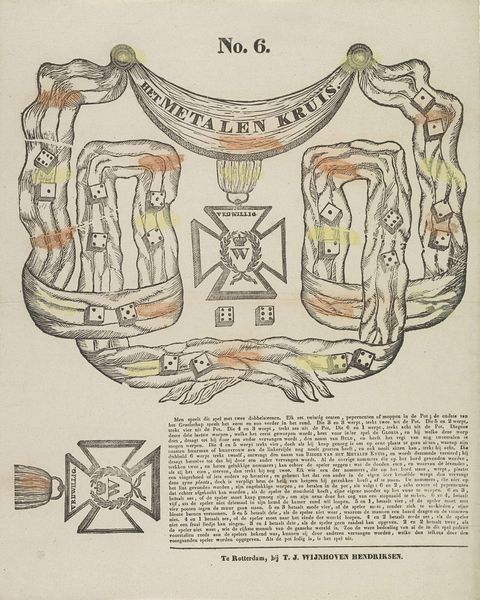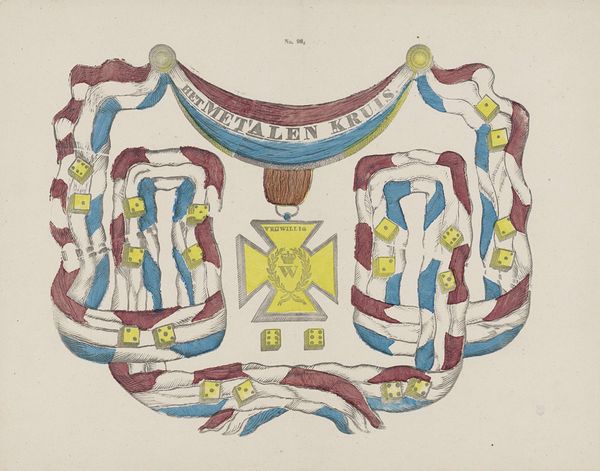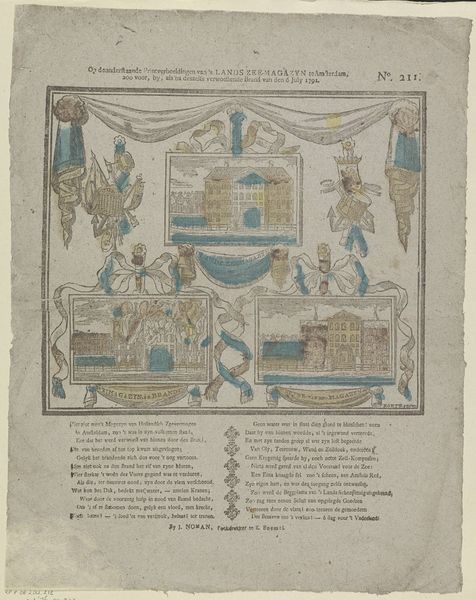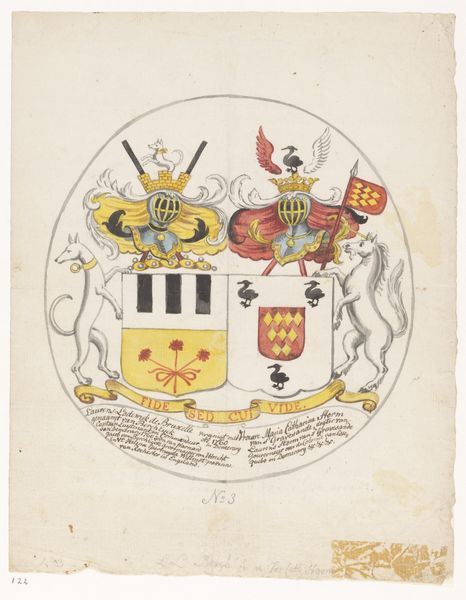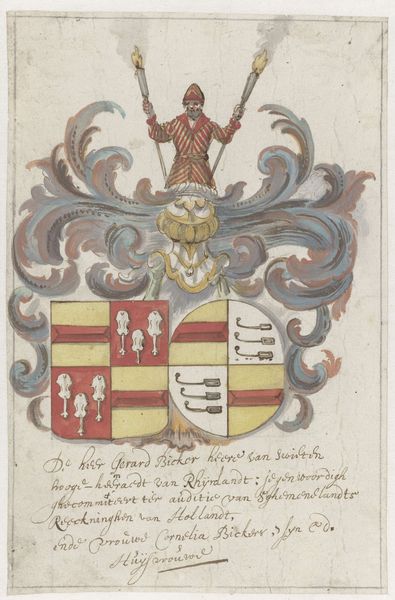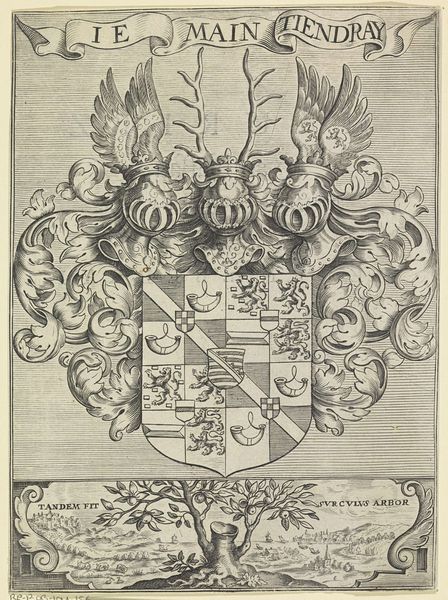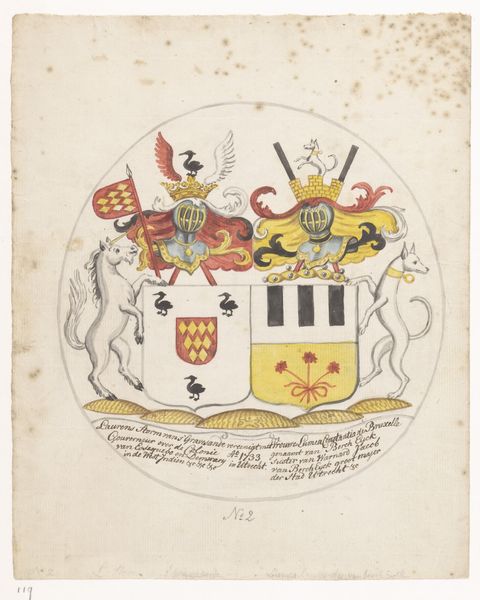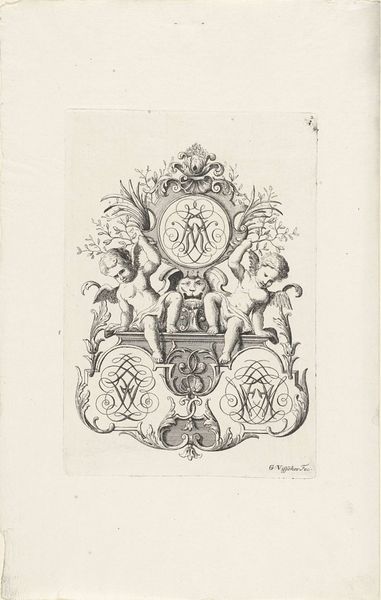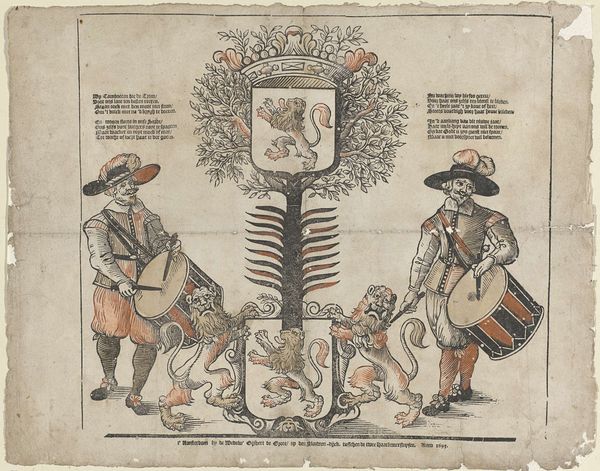
Dimensions: height 420 mm, width 337 mm
Copyright: Rijks Museum: Open Domain
Curator: This intriguing print, titled "Het metalen kruis," which translates to "The Metal Cross," comes to us from the hand of Theodorus Johannes Wijnhoven-Hendriksen, and was created sometime between 1832 and 1850. What's your immediate take? Editor: Well, the color palette is muted yet uplifting. The dice tumbling across those draped sashes surrounding a yellow cross suggests a game board... a rather playful take on something as serious as, presumably, a military honor, considering the "W" beneath a crown on the cross. Curator: Exactly! Look closer—the work is a fascinating mix of media: engraving, print, and collage. Wijnhoven-Hendriksen, operating out of Rotterdam, combined graphic techniques with hand-assembled elements to produce this peculiar game. The core element being that metal cross, clearly intended as the focal point around which all labor revolves. Editor: The prominence of the cross, with its central "W" and laurel wreath, immediately pulls my focus. The word "VRIJWILLIG," or "volunteer," inscribed on the cross... it carries heavy connotations of national pride and sacrifice. What sort of collective memory was the artist trying to trigger? Curator: Considering the era, and the lingering shadow of the Napoleonic Wars, I suspect the "Metal Cross" wasn’t just about individual heroism. It reflects the post-war reshaping of national identity. But I wonder, does the assembly line aesthetic - literally pieced together- comment on industrial growth, perhaps critiquing blind patriotism? Editor: Absolutely, the placement of dice injects an element of chance and destiny, and a light air into a charged emblem of courage and military prowess. It's fascinating how these symbols are juxtaposed: controlled bravery, celebrated by the establishment, alongside an uncontrollable luck of the draw! Curator: That friction creates tension. Production methods, material choices, and those loaded symbols become instruments for communication about a nation finding its place after upheaval. Even down to the very printing and publishing workshops from which they originate! Editor: For me, it's more of a game board of patriotic virtue. Each roll presents possibilities and the game is full of visual emblems, allowing 19th century society to connect ideas, such as duty and fortune. Curator: A potent combination indeed. This artwork encourages me to think about Dutch society in a way I wouldn't expect and invites you in. Editor: Definitely a conversation piece brimming with unexpected symbolism. I'm off to learn how the Dutch celebrate!
Comments
No comments
Be the first to comment and join the conversation on the ultimate creative platform.
